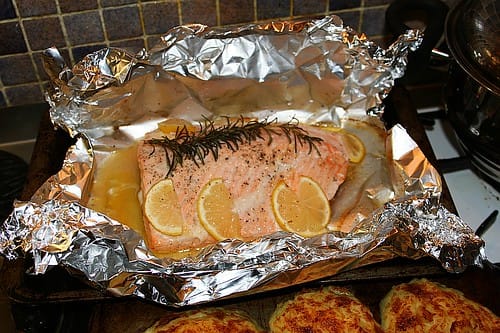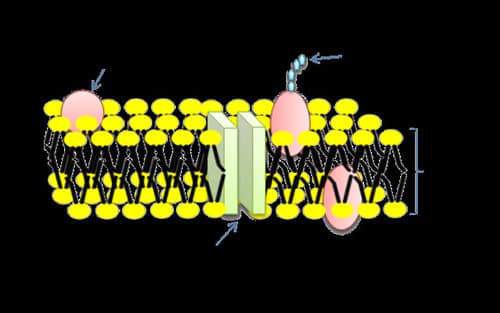
18 Aug Best brain fats for your brain health and overall health
Yes, good fats, or more aptly named functional lipids are suitable for the health of your brain. What kind of brain fats should you eat, though? And to what story should you listen? There are so many different versions of the brain fat story. This post aims to fill you in on the science behind fats that are good for your brain. And to give you a tour of the research in this area so that you can make up your mind.
What are the different types of brain fats you can get from your diet?
Saturated fatty acids – solid at room temperature
The names of the different classes of fats usually relate to the length of the components of the fatty acid chain and the number of double bonds between individual carbon atoms in the fatty-acid chain. Saturated fatty acids have no double bonds in their structure. They are mostly found in animal products, such as meat and dairy products. These types of fats are solid at room temperature.
The problem with these types of fats is that they can adhere to nicks in blood vessels. And over time can build up to form a kind of atherosclerosis. This process ends up blocking blood vessels, and eventually, blood will have difficulty getting through the blockages. The blockages can also break off and create clots in blood vessels, that inevitably cause death and incapacity. This problem can happen in blood vessels in the body as well as the brain. There is robust evidence to suggest that eating saturated fat can shorten the life-span in this way.
However, the popularity of the foods that contain saturated fat helps to rally evidence around the fact that saturated fats are right for you. Many diets promote the eating of saturated fats, including Atkins, Body Trim, Dukkan, and most variations of the low-carb diet, as well as Paleo diets.
Evidence in favour of eating saturated fats
The evidence for the fact that saturated fatty acids are suitable for the brain is the fact that they contain (a little) of the essential omega-3 fatty acid DHA. However, the levels of this vital lipid are higher in fish, particularly oily fish such as wild salmon, sardines, and mackerel.
The one good thing about saturated fatty acids is that when heated, they do not get oxygen-free radicals stuck within the double carbon bonds, like other fats. So they are more stable under heating conditions. For this reason, many nutritionists suggest using coconut oil if you are planning to fry food. As it is a medium-chain saturated fatty acid. It has no double bonds, so does not degrade as mono-unsaturated fatty acids.
Mono-unsaturated fatty acids
We are getting into the realm of brain fats that are often part of some of the healthiest diets recommended by doctors and nutritionists. Mono-unsaturated fats are so-called because these fats contain one double carbon bond in each lipid chain. Olive oil and avocados are some of the most well-known sources of mono-unsaturated fats. Other sources include sesame oil, peanut butter, and many nuts and seeds.
These fats are liquid at room temperature. They are thought to be so good for your health and indeed your brain health because they reduce the amount of bad (LDL) cholesterol in your blood. This helps to lower the risk of heart disease and stroke. Mono-unsaturated fats like those found in olive oil and avocados also provide nutrients that help to develop and maintain your body’s cells. They contribute vitamin E to your diet, which is an important antioxidant. [2]
These fats should not be exposed to high heat such as frying, as the double carbon bond, provides space for oxygen free radicals to get in. Therefore turning these fats into unstable and unhealthy fats.
An example of a diet that preferences these kinds of (raw) mono-unsaturated acids is the Meditteranean diet. This diet is considered one of the healthiest diets in the world. It is recommended by many doctors and nutritionists. It focuses on whole grains, fruit and vegetables, and small amounts of meats.
Poly-unsaturated fatty acids
Polyunsaturated fats, as you have probably guessed have numerous double carbon bonds in their fatty acid chains. So-called long-chain poly-unsaturated fatty acids, or PUFA for short, are considered some of the healthiest for your brain. Omega 3 and 6 fatty acids are examples of essential PUFAs. And these fats are called essential fatty acids because we can not produce them ourselves in our bodies. We must get them from our diet.
It is important to eat more omega3 fatty acids than omega6 fatty acids because the two forms of omega6 PUFAs linoleic acid (LA) and arachidonic acid (ARA) acid promote inflammation in the body. You don’t need to avoid omega6 altogether. However, it is important to get much more omega-3 – alpha-linolenic acid (ALA), eicosapentaenoic acid (EPA), and docosahexaenoic acid (DHA) than the omega-6 fatty acids.
Furthermore, foods fried in vegetable oils such as refined sunflower and soybean oils are unnaturally high in omega-6 PUFAs. If you eat these kinds of foods and not enough omega-3, then your body can become more inflamed and less able to heal itself. Also, lowering the amount of vegetable oil in your diet can increase the absorption of DHA so it is a double-win.
Where to get omega-3 fatty acids – brain fats
Sources of omega-3 fatty acids include sea vegetables such as seaweed, oily fish, such as salmon, tuna, sardines and mackerel, and grass-fed animals, who get the omega-3 from eating the grass. In the same way, fish get omega-3 fatty acids from the seaweed they eat.
Like mono-saturated fatty acids, heat will destroy the structure of PUFAs, due to the double-bonds.
There are vegetarian sources of omega-3 fatty acids as well. Ground flaxseed provides a significant amount of ALA, a vegetarian omega-3, and while some of this can be converted into the essential PUFAs DHA and EPA, the process is quite inefficient. [1] It is important to note that the flaxseeds need to be ground. Ground chia seeds are another good source of ALA. Ground flaxseed has also been found to decrease blood pressure and is considered to be an all-round (veritable) super-food.
Trans-fats to be aware of – unhealthy brain fats
The last class of brain fats to be aware of are trans fats. These can play havoc with your body and your brain because they raise your bad (LDL) cholesterol and reduce good (HDL) cholesterol. Eating trans fats can also increase your risk of developing diabetes.
Trans fats can be found naturally in foods made from animals. These animals produce some of these fats in their guts, such as milk and meat products. These fats are usually found in small amounts. Artificial trans fats are also found in foods using an industrial process to add hydrogen to liquid vegetable oils to make them more solid. [3]
Trans fatty acids can be found in fried foods like doughnuts. And also in baked goods including cake, pie crust, biscuits, frozen pizza, cookies, crackers and margarine, and other spreads. If you are wondering how much trans fat food has, look at the nutritional panel for trans fat. (Please note, products with less than 0.5 grams of trans fat per serving may say 0 grams of trans fats). Another place to look is the ingredient list. Look for ‘partially hydrogenated oils’. [3]
What is the function of fat in the brain?
The brain holds 25 % of the cholesterol in your body. This cholesterol helps your neurons to form connections with other neurons. [4] Having extensive neural connections is indicative of a strong brain that is resistant to disease and trauma.
Fats are necessary for the cell membranes of every cell in the brain. [5] In fact, the synaptic membrane, has a higher concentration of DHA than most tissues in our bodies. [6] DHA is responsible for keeping cell membranes soft and flexible. This makes the cells in our brains capable of alternating the shapes of the receptors which helps the neurotransmitters to lock into place. Another reason why saturated fat is not healthy for your brain is that it makes cell membranes hard and rigid and they are unable to wiggle or expand to allow the neurotransmitter to lock into place. [6]
DHA also has an effect on our mood, since DHA can increase the number of synapses and nerve endings, which in turn produce more serotonin. [6] As serotonin can make you feel calm and happy, the importance of DHA can not be overlooked.
It is also thought that DHA has a role of preventing cognitive decline, in particular Alzheimer’s disease.
EPA plays more of a support role in your brain. It is not found in the brain as high amounts as DHA and helps support the brain by increasing blood flow, reducing inflammation, and influencing blood clotting, blood vessel activity, and blood supply.
EPA and DHA also reduce the amount of AA in the brain. This is important because, as stated above, AA is the precursor of many inflammatory conditions, and increased intake later in life can increase the risk of developing dementia by more than 40 %. [6]
Conclusion – fats to avoid, fats to eat in moderate amounts and brain fats to increase
The conclusion is quite evident from the research that we have explored in this post. Saturated fats, or those found in chicken, beef, turkey, dairy products, and other meats, make the cell membranes in our brains more rigid. This stops the flow of neurotransmitters in the brain. Furthermore, while eating mono-unsaturated fats such as olive oil and avocados are healthy because they reduce bad (LDL) cholesterol, they should not be used for cooking at high temperatures. Essential fatty acids such as ALA, EPA, and DHA are critical for the human mind because our brain cell membranes contain DHA in each cell. This essential omega-3 acid makes cell membranes soft and flexible, allowing for neuronal connections and neurotransmitters to be conducted. DHA also reduces the risk of Alzheimer’s and has a positive impact on our mood.
Eat raw olive oil, peanut butter, avocados and nuts, and seeds. And it would also be advisable to eat two servings of oily fish each week to maintain the levels of DHA in your brain. You can also get healthy plant-based omega-3s from ground flaxseed, ground chia seeds, and sea algae.
References
- Ede, G, 2019, ‘The Brain Needs Animal Fat: Why humans can’t thrive on plants alone.’ Psychology Today, < https://www.psychologytoday.com/us/blog/diagnosis-diet/201903/the-brain-needs-animal-fat > viewed 15th August, 2020.
- Heart.org, 2015, ‘Monounsaturated Fat’, on Heart.org, access at < https://www.heart.org/en/healthy-living/healthy-eating/eat-smart/fats/monounsaturated-fats> viewed 15th August 2020.
- Heart.org, 2017, ‘Trans Fats’ access at < https://www.heart.org/en/healthy-living/healthy-eating/eat-smart/fats/trans-fat> viewed 15th August 2020
- Scheidl, N, 2020, ‘Your “Fat” Brain’, on Fit Minds, access at < https://fitminds.ca/brain-health-nutrition-your-fat-brain/> viewed 15th August 2020.
- Health 365, ‘Why your brain needs fat’, on Health365.com, access at < https://www.health365.com.au/articles/why-your-brain-needs-fat > viewed 15th August 2020.
- Arden, J, 2010, ‘Rewire Your Brain: Think Your Way to a Better Life’, John Wiley and Sons, GB.
Image credits
“cell membrane” by Becky Boone is licensed under CC BY-SA 2.0
“Doughnuts” by arnold | inuyaki is licensed under CC BY 2.0
“File:Wikibookpic3.jpg” by Sampurton is licensed under CC BY-SA 4.0
“From above: delightful summer salad, avocado, celery, romaine lettuce, olives, feta cheese, almonds, tomato, tamari sauce, olive oil, served on a square maroon zen plate, silver fork, second floor loft, Seattle, Washington, USA” by Wonderlane is licensed under CC BY 2.0
“IMG_5332” by Neeta Lind is licensed under CC BY 2.0
“Moonlight Beach in Kemer” by arnybo is licensed under CC BY 2.0
“Olive oil” by quinn.anya is licensed under CC BY-SA 2.0
“time for another food picture :-)” by ndrwfgg is licensed under CC BY 2.0
“Trying light diffusion. Not grass fed but still #LessInsulin and #HealthyFat (and saturated fat is no longer linked to CVD) #sousvidenation #sousvide #anovafoodnerd #beef #LCHF #MetabolicHealth #sonya6500 #sonyalpha #foodphotography” by tedeytan is licensed under CC BY-SA 2.0










Pingback:Why do walnuts look like brains? A brain health history - My Health Zest
Posted at 21:10h, 06 December[…] reason scientists think that walnuts are beneficial for our brain health is due to the presence of omega-3 and other fatty acids. Our brains are very fatty organs and are made up of about 60% fats. Omega-3s […]
Pingback:Feed your brain guide - nourish your most important asset - My Health Zest
Posted at 21:11h, 06 December[…] fats that you should be reaching for are omega-3 fats found in oily fish such as salmon, sardines, herring, mackerel, tuna and anchovies. Aim to eat […]